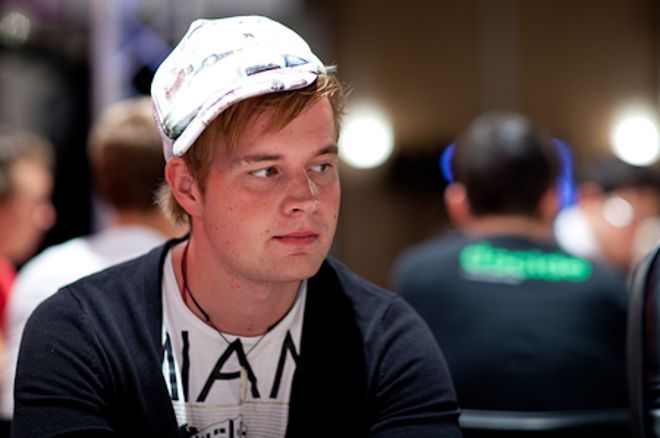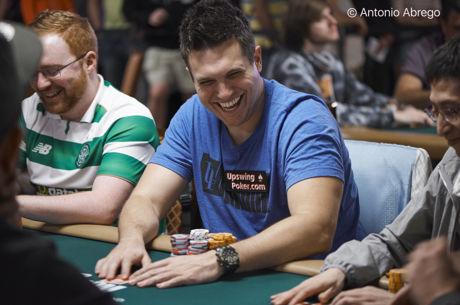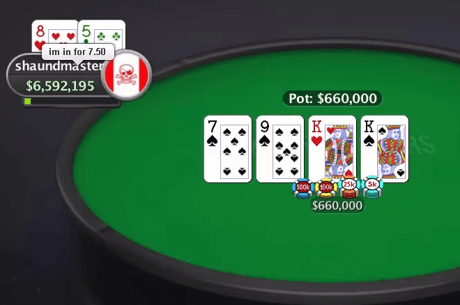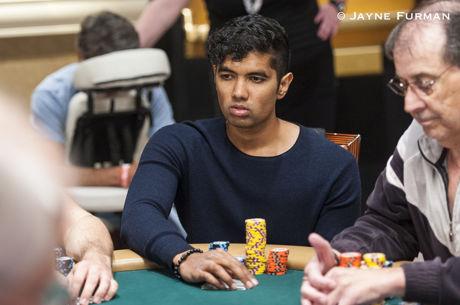3 Career-Ending Mistakes Made by Tournament Players

Table Of Contents
- 1. Aggressive Bankroll Decisions
- 2. Playing in the Wrong Tournaments
- Take Your Shots at Small-Field Tournaments
- �� The variance is lower
- �� You make final tables more often
- �� The emotional swings aren��t as big
- 3. Ineffective Studying
- How to Watch Training Videos (and Actually Learn Something)
- Final Thoughts
An article by Miikka Anttonen.
I've seen countless aspiring pros fall short of success. So many that I've noticed a pattern of three mistakes made time and again.
In this article, I'll break down those mistakes and discuss why they might prevent you from making it as a professional tournament player.
If you choose to play under-rolled, chances are you will end up busto sooner or later.
1. Aggressive Bankroll Decisions
Let's start with an obvious point: If you don't have a deep enough bankroll, you are at risk of going broke.
Variance is an inherent part of playing tournaments, and 100+ buy-in downswings are not uncommon for tournament professionals. Your long-term success depends on having a bankroll that can withstand this. If you choose to play under-rolled, chances are you will end up busto sooner or later.
For professionals, my recommendation is to have a bankroll 500 times the amount your average buy-in. Of course, you can be more liberal with your bankroll if you play in very soft games or if you just play for fun.
Do you play live poker tournaments or cash games? Get the 10 Laws of Live Poker guide for free to learn specific tactics that are extremely effective versus live competition. Download now!)
2. Playing in the Wrong Tournaments
I know a ton of great players who are brilliant at everything poker, except when it comes to making money. I also know a similar number of players who can barely calculate pot odds but make six figures most years.
In most cases, the discrepancy between these two groups is due to game selection.
Game selection isn't just about registering in the softest tournaments. There are several other things to consider in order to figure out what tournaments fit your game best.
To game select optimally, you need to ask yourself a few questions:
- What am I trying to achieve short-term?
- What am I trying to achieve long-term?
- How much variance can I withstand?
If you answer to that last question is ��not much,�� I have a specific tip for you.
Take Your Shots at Small-Field Tournaments
There are a few benefits to playing tournaments with only 50 to 500 players:
there's absolutely no harm in playing mostly small field tournaments with bigger ones mixed in.
�� The variance is lower
Huge tournaments with thousands of players offer big paydays if you run deep, but that potential payday comes with longer downswings and a lot more variance.
�� You make final tables more often
Playing at small final tables allows you to practice for the big one(s) that you'll eventually reach. The more final table play experience you have, the better you will do when you're lucky enough to play for really big money.
�� The emotional swings aren��t as big
Just missing a big score in a huge tournament hurts --- ask any tournament pro. If you only play smaller fields, however, you will care a lot less about what happens because there��s less at stake. As a result, you'll become used to the emotional ups and downs of tournament play, without having to risk the fallout of coming up short in a huge tournament.
As tournament players, it's natural to be a bit of a dreamer. We all want that big score. We all want to make that big final table. But there's absolutely no harm in playing mostly small field tournaments with bigger ones mixed in. To the contrary, it may actually result in a bigger bankroll and a saner mind.
3. Ineffective Studying
Poker can be an anti-social game, yet it's tough to find success alone.
There's a ton of study material out there nowadays, and you need to take advantage of it. You need to rely on training sites, articles, forums, advice from poker friends, software and anything else to make it in poker.
How to Watch Training Videos (and Actually Learn Something)
Back when I started playing, there was only one poker training site. A year later, another popped up. And then another. And another.
In 2017, there are many great options *cough* The Upswing Lab *cough* out there, but sorting through them can get overwhelming.
Wherever you decide to sign up, there's one big mistake to avoid: watching training videos too quickly.
Watching a 60-minute training video should take 120 minutes, minimum.
Watching a 60-minute training video should take 120 minutes, minimum.
You're not watching a TV show. You're not watching to be entertained. You're watching to learn. And to learn as effectively as possible you need to pause the video regularly to take notes and absorb the information being presented. If you're not taking notes, most of the information won't stick.
Along with taking notes, I also recommend repeatedly hitting the pause button whenever the instructor faces a decision. My process goes like this:
- Step 1. Watch a hand review video of an instructor deep in a tournament.
- Step 2. Wait for a challenging spot to come up.
- Step 3. Pause the video before the instructor makes a move.
- Step 4. Ask myself what I would do in this situation (using calculators and range software as needed).
- Step 5. Play the video and see if the instructor agrees.
Repeat this process.
That, my friends, is effective studying. You simply won't absorb as much information by watching the video while eating and playing Candy Crush.
Final Thoughts
If you can avoid these three mistakes, I truly believe you can go a long way in this game. I wish you the best of luck on your journey to success!
Want to win more playing live poker? Grab the 10 Laws of Live Poker for free now! Downloading and following these laws will improve both your win-rate and overall poker-playing experience. Get the laws here!
Sponsor generated content by Upswing Poker








